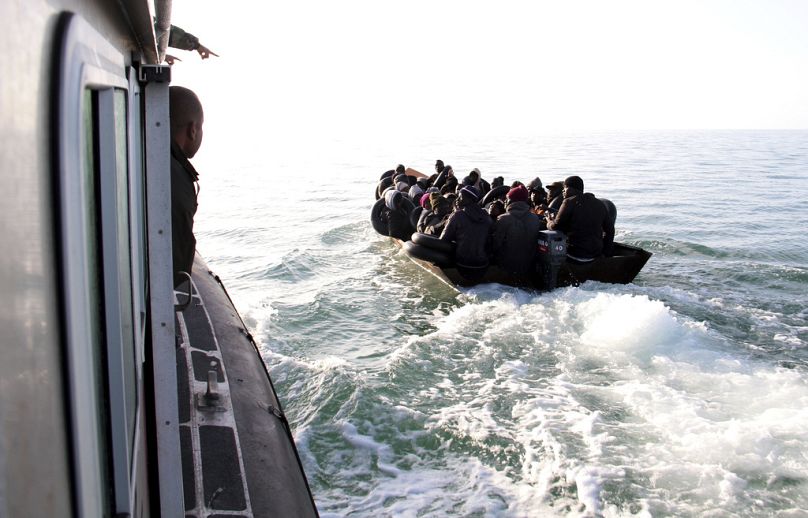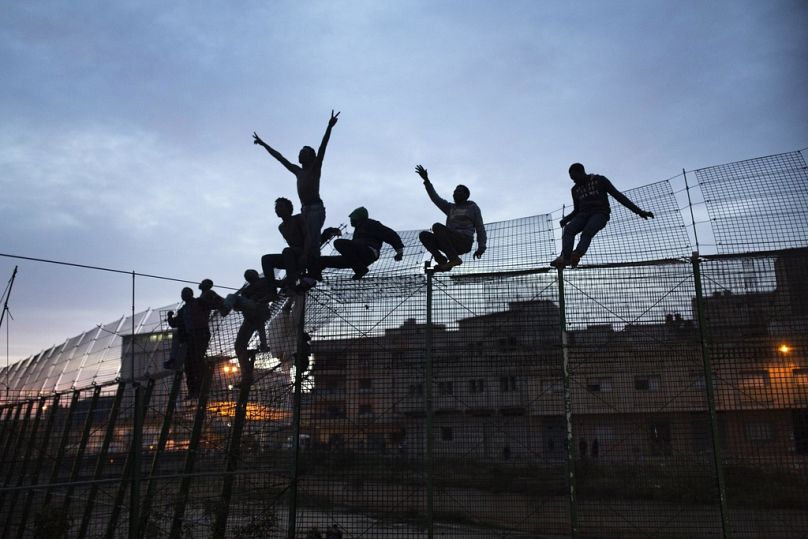While Spain managed to reduce the number of arrivals by 3.3%, Italy and Greece saw a 115% and 65% increase respectively, according to UNHCR figures.
In early June a sadly common sight in the Mediterranean was repeated on the Spanish coast.
A small group of fishermen found a migrant boat with 52 people on board trying to reach the Canary Islands. On board was a pregnant woman who did not survive the crossing.
Despite the Canary Islands receiving an average of 100 migrants per day, Spain managed to reduce the number of arrivals nationally by 3.3%.
This figure, published by the Ministry of the Interior, is not particularly striking on its own, but in comparison with the country's European neighbours, it is.
Italy has seen the number of arrivals increase by 115% and Greece by 65%, according to UNHCR figures published by El País, yet Spain has seen its numbers fall.
When the Italian Prime Minister, Giorgia Meloni, took office in autumn 2022, she promised to resolve the issue of migration once and for all, but Rome's supposed hard line on immigration has proved to be ineffective at reducing numbers.
“Italy has seen the most rapid increase in number of arrivals, with around 90.000 sea arrivals since the beginning of the year, compared to 105.000 for the whole of 2022 and 67.500 in 2021,” Camille Le Coz, Associate Director at the Migration Policy Institute Europe, told Euronews.
Why has Spain reduced its figures?
Spain became the EU's main gateway for irregular migration in 2018, with arrivals doubling to 57,000, while the number of arrivals in the EU fell to a five-year low.
For the first time, the southern European country became the most used route for migrants trying to reach Europe.
But that was not the only year it broke records. In 2020, it recorded the second highest number of arrivals by sea in the last twenty years.
However, the trend is now downwards. Irregular immigration fell by almost 70% at the beginning of 2023.
The numbers were made possible in large part by a sharp drop in arrivals from Morocco following the crisis the Spanish government faced after the Melilla fence tragedy last summer.
According to the Moroccan authorities, at least 23 sub-Saharan Africans lost their lives when they tried to storm the fence and enter Spanish territory.
This placed southern Europe's immigration controls and its relationship with North Africa under scrutiny. Several migrants reported beatings by Moroccan police to the Spanish media.
Since then, the authorities in Rabat have reinforced the border by building an intermediate section of fence a few hundred metres long with razor-sharp concertinas.
“Spain has long had a cooperation with Morocco in order to prevent border crossings. This migration partnership has experienced disruptions in the past few years, but it is still a major factor to explain the lower arrivals in Spain,” says Le Coz.
“However, migration routes are constantly changing and if the route via Tunisia becomes more complicated, dangerous, and expensive - as might be the case given the efforts of the Tunisian government to curb migration - more migrants may seek to cross to Europe via Morocco”, she adds.
Is government policy the key to curbing migration?
When it comes to migration flows, many factors explain arrivals in Europe, as the expert from the Migration Policy Institute Europe says.
People leave their home due to the lack of economic opportunities, but also violence, discrimination, and limited trust in the future.
But, without a doubt, government policies also come into play.
“Migration policies have impacts on these trends, either by making it more dangerous and expensive to take some routes, or by opening legal pathways and giving opportunities for migrant workers to travel regularly to Europe,” explains Le Coz.
Overall, the number of migrant arrivals through the central Mediterranean has decreased, according to MSF.
"There is a clear increase in interceptions by the Libyan and Tunisian coastguards. Half of the people trying to cross were returned to these countries in 2018," said Raquel González, head of institutional relations at MSF.
In addition, "Italian authorities have reduced the size of their rescue zone and Frontex has prioritised containment over rescue."













